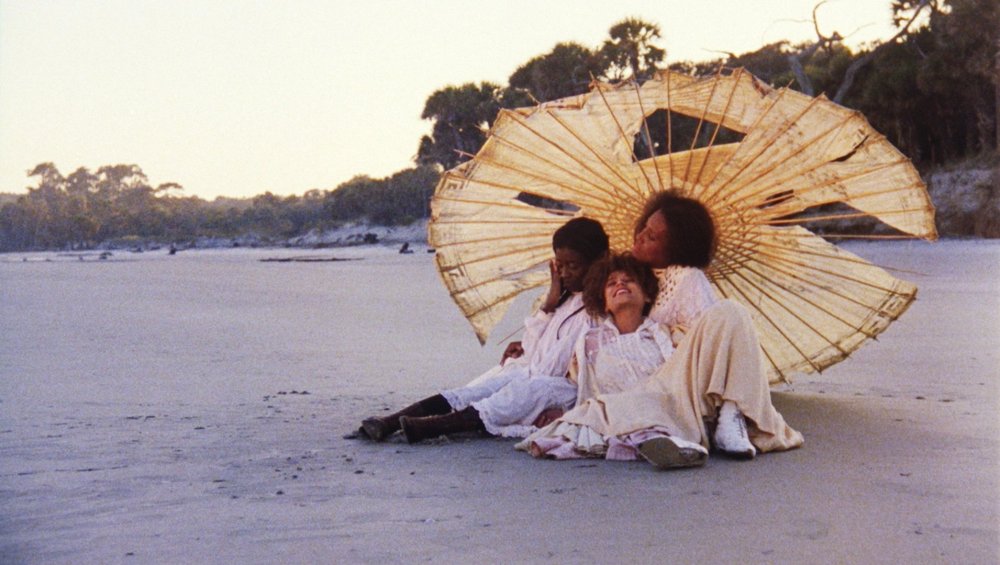Cinema is dreaming. You enter a darkened space, get comfortable, then experience a series of images and sounds. They may connect one after another into a coherent narrative. They could be disjointed images and sounds, linked thematically or through colors and shapes. They may be somewhere in between, a Strindbergian sonata of surreal meaning. We want to find meaning, and so we shall. Even if the plot is beside the point.
Daughters of the Dust is a dream. It has the quality of memory that’s fading away, like a dream that dissipates when you awaken. You remember how you felt. You remember the internal logic of the dream—it made so much sense in that liminal time between sleeping and awareness, but now, it seems so unreal.
There is a story, and it’s important insofar as it involves people, Gullahs with their own ways and their own culture. They are different from you and me. But these are roundly drawn characters, not types. There is an opening sequence of startling beauty. It sets the rustic scene: marsh grass, shore birds, still lifes of shacks and handmade furniture. There are aerial shots of the island at sunset. And then: a woman dressed in white lace. Next to her, a nattily dressed man with a box camera. Who are these outsiders? Why have they come to this island where time has stopped?
There is music. Ibo drums—primitive, of the Old World. But then, a fretless bass, a synthesizer. It’s a soundtrack fixed in 1991, but it also works to subvert expectations. You—yes, you, modern moviegoer—we see you. Now listen. There will be a storyteller to guide you. It will be an Unborn Child.
That title card (“Unborn Child”) clues us in that this will not be a conventional story. The narrative tension surrounds the decision of an extended family to move away from their island to the mainland. The way they talk about it, they must be moving hundreds of miles away, but in reality you could swim the short distance. There is tension between old ways and modernity, between the Gullah tongue and the English of the 1900s. There is tension between the animistic spirituality of Nana Peazant, the family matriarch, and the Christianity of Viola, the woman in white returned from civilization. She has brought the photographer because even she can see this world passing away, and she wants the cosmopolitan photographer to document it all before it’s a memory.
Time has no hold here; the story does not unfold quickly. It’s as if the Peazants are delaying the inevitable. There are characters with curious backgrounds—a Cherokee boy and a Muslim man. We get no explanation of how they fit in with the others; they apparently just are. Most of the film—picnics, large family dinners, games—takes place on beaches, with Viola, the enigmatic Yellow Mary, and her even more enigmatic companion always dressed as if they’re going to Delmonico’s.
And then, they depart. Some of them, at least. There is a logic behind who stays and who proceeds. There is a shape triangulating the Muslim prayer, the Christian Bible study, and the ancient pagan rituals. And there is a rhythm undulating among the women, especially between the sexually unconventional Yellow Mary and Eula, who carries the issue of her rape at the hands of a white man.
Daughters of the Dust is no anthropological survey, even as it highlights a little-seen culture within a culture. Even though it’s billed as the first wide-release film by a Black woman director (not really—Euzhan Palcy’s A Dry White Season came out in 1989), do not see this movie because you want to see a film by a Black woman director. Julie Dash set out to make the film she wanted to make, frustrating her chance to make many more films. Good for her. Daughters of the Dust is a great American film. Her film is about changes and the courage to leave behind the old ways in search of new ones. It’s about memories and myth. It’s about the trauma of dreaming and waking up.

